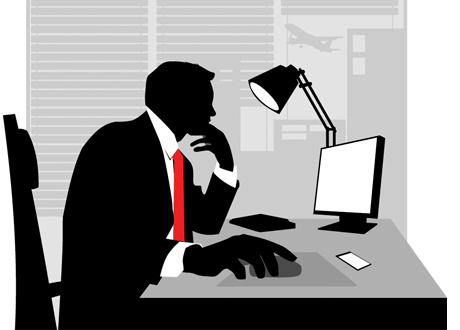By: Sheila Moorcroft
Concern about how long we spend sitting is rising: new research indicates that it may be a greater health risk than smoking. Mobile technologies are also changing how we sit – badly is the answer, with new pains and problems. New lifestyles, work patterns and designs needed.
What is changing?
We are all familiar with the problems of blood clots on long haul flights; our sedentary lifestyles may be an even bigger risk, added to which new technologies are changing how we sit compounding the problem.
A growing body of research suggests that not only is sitting bad for us, but that even a daily workout in the gym may not be enough to alleviate the damage. A review of TV habits in Australia analysed and adjusted the data for other health variables, then concluded that every hour of sitting watching TV after the age of 25 takes nearly 22 minutes off expected lifespan. Six hours a day results in a likely reduction of 4.8 years. Other research also indicates significant correlations with increased health risks: those who sit most have a 112% increase in the risk of diabetes; a 147% increase in the risk for cardiovascular disease.
Added to that, new technologies are encouraging us to sit, lie, slouch, lean over our tablets and phones – not to mention use thumbs to a far higher degree than in the past – again causing potentially long term problems especially in the neck.
Why is this important?
Inactivity research, as this field is called, is a relatively new area, but is growing as the need to address the costs and impacts of obesity increases. But it is not just TV watching that is the problem, work is ever more sedentary, with people taking fewer lunch breaks away from their desks, and children are increasingly kept inside.
Office designers may need to introduce more meeting rooms with standing room only – keeps meetings short and keeps us a awake too! Human Resource departments and managers may need to encourage movement breaks and exercise sessions to combat excessive sitting – or they may face litigation if these findings becomes widely accepted. Chairs with arm rests or more flexible adjustments may also be needed – for home, office and transport. Technology companies will also need to address the issue of postures and new technologies.
By Sheila Moorcroft
About the author
 Sheila has over 20 years experience helping clients capitalise on change – identifying changes in their business environment, assessing the implications and responding effectively to them. As Research Director at Shaping Tomorrow she has completed many futures projects on topics as diverse as health care, telecommunications, innovation management, and premium products for clients in the public and private sectors. Sheila also writes a weekly Trend Alert to highlight changes that might affect a wide range of organisations. www.ShapingTomorrow.com
Sheila has over 20 years experience helping clients capitalise on change – identifying changes in their business environment, assessing the implications and responding effectively to them. As Research Director at Shaping Tomorrow she has completed many futures projects on topics as diverse as health care, telecommunications, innovation management, and premium products for clients in the public and private sectors. Sheila also writes a weekly Trend Alert to highlight changes that might affect a wide range of organisations. www.ShapingTomorrow.com
Photo: Office worker at desk from Shutterstock.com

